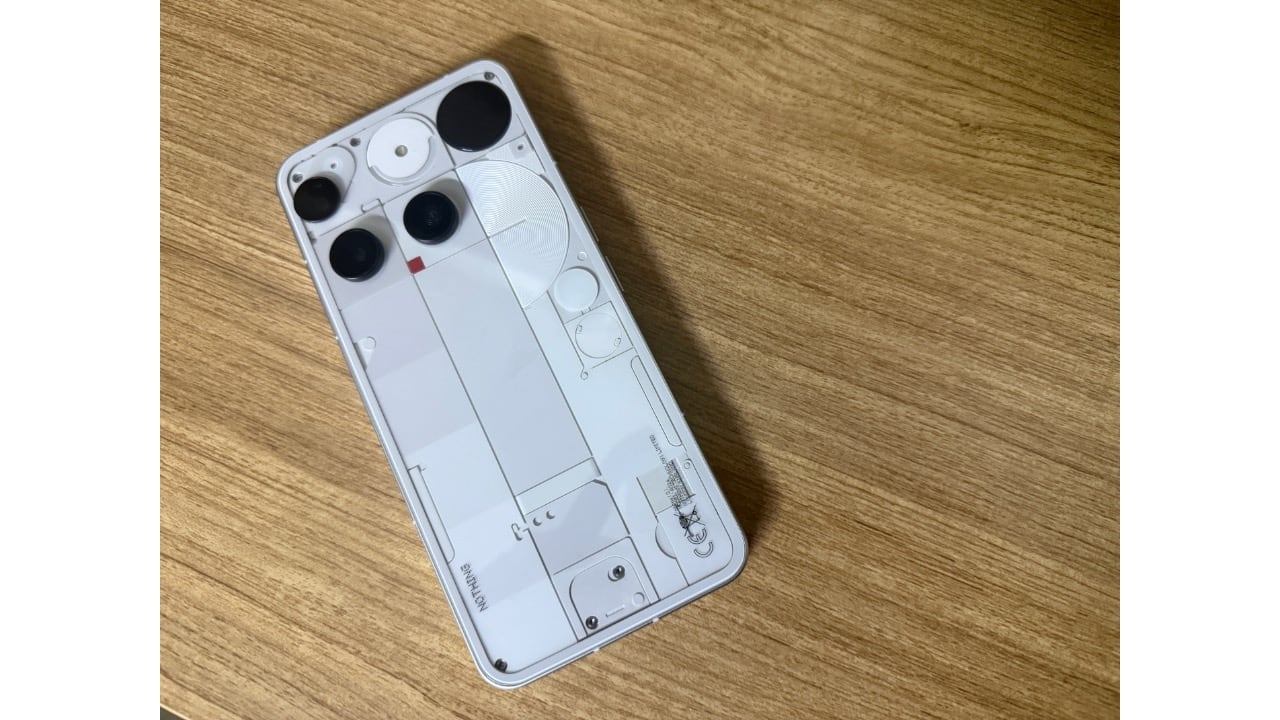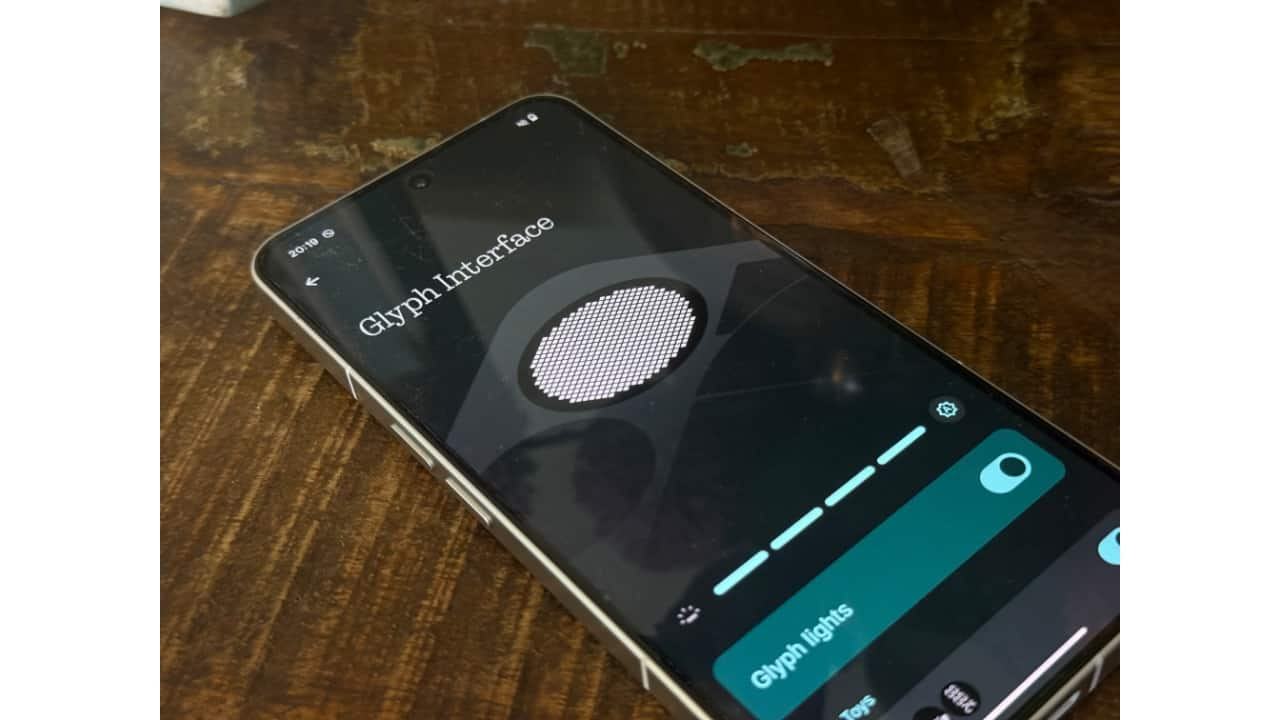



From the moment it arrived close to four years ago, Nothing has positioned itself as the rebel of the smartphone world — more focused on design statements and playful features than chasing benchmarks. With the Phone (3), that philosophy hasn’t changed, but the execution has matured. This is Nothing’s most refined device yet, and the first it’s officially calling a flagship.
It brings meaningful upgrades like a new Glyph Matrix display, a 3x telephoto camera, improved durability, and a more capable chipset. At Rs 79,999, it goes head-to-head with established heavyweights like the Galaxy S25 and Pixel 9. On paper, it won’t win every spec comparison, and it doesn’t try to. What the Phone (3) offers instead is something increasingly rare in smartphones: character. It’s for people who want their device to feel different, even if it means giving up a few conventional strengths. Is it worth the hype and the money? Read on to find out more
Same ‘weird' vibe, but all grown upAvailable in white and black, the design shifts from ovals to a three-column grid, exposing the PCB layout underneath like a teardown frozen in time. Screws, cutouts, and a distinct look gives it an edge over rivals.
At 6.67 inches, the display is technically smaller than last year’s 6.7-inch panel, but you won’t notice. What you will notice is the bump in resolution, touch sampling, and brightness. The 120Hz adaptive refresh rate stays, and the Gorilla Glass 7i up front and Victus at the back boost durability. It’s also rated IP68 now — finally flagship-grade dust and water resistance.
Still, it can’t outshine the best. The Pixel 9 Pro XL’s Super Actua display is brighter and more vibrant. The Galaxy S25 Ultra’s anti-reflective coating makes it easier to read in sunlight. The Phone (3) is great to watch content on, just not mind-blowing. But again as I said, this isn’t trying to be your benchmark champ or win the specs battle.




But the real star is the new Glyph Matrix, a 489-pixel mini-display tucked into a circle on the top right. The older Glyph lights spanned the entire back and mostly flashed like glorified ringtones. This? This is a dot matrix playground. Gimmicky? Depends. Did you think the old Glyph was gimmicky? If yes, then no, this isn’t gimmicky at all.
From a Magic 8 Ball to a battery meter, to rock-paper-scissors, to an actual mirror mode that helps you frame selfies using the rear cameras (yes, pixelated and all), the Glyph Matrix is less about productivity and more about play. And that’s the point.
You cycle through these “Toys” using a haptic touch button halfway down the rear panel—short press to cycle, long press to activate. It’s not perfect (the stopwatch, for instance, is clunky to use), but it’s clever. And importantly, it feels fresh.
A flagship? Sort ofInternally, the Phone (3) has matured. The Snapdragon 8s Gen 4 isn’t the most powerful chip on the market—that title goes to the Snapdragon 8 Gen 4 Elite but it’s more than capable. Daily performance is snappy, multitasking is fluid, and even graphics-heavy games run without issue.




You get 12GB RAM and 256GB storage out of the box. Bump up to Rs 89,999 and you’ll double the storage and get 16GB of RAM.
The 5150mAh battery is solid: I routinely hit 7–8 hours of screen-on time and came back impressed. It can last for a day on a single charge. Charging is quick: 65W wired and 15W wireless, with 5W reverse wireless thrown in for good measure. A generic charger got me to close to 65% in 40 minutes, and a full top-up in just under an hour. Not bad at all.
Cameras: Better, but still not a ProThis year’s big camera upgrade is the addition of a 50MP 3x telephoto lens, joining the existing 50MP main and ultrawide sensors. The selfie cam is also 50MP, which feels slightly excessive but helps with brighter, sharper self-portraits.
The main camera generally performs well. Detail and brightness are strong, and it handles high-contrast scenes decently. Compared to the Galaxy S25 Ultra and Pixel 9 Pro XL, the Phone (3)’s output is closer to the Pixel’s style — natural, slightly cooler tones — but lacks the Pixel’s depth and dynamic range.














Ultrawide shots are fine, though not exceptional. The macro mode nabled via the telephoto is a surprise win.
Selfies? The Phone (3) does a good job with edge detection around glasses and facial hair, though the colour science sometimes leans colder than ideal. The Pixel still wins here with its warm tones and better skin handling.
This is a competent triple-camera setup that holds its own in good light, but low-light shots still suffer, and the processing lacks the finesse of Google or Samsung.
Nothing OS: Smart chopsNothing OS 3.5, built on Android 15, continues the company’s UI-as-art experiment. With dot-matrix fonts, monochrome palettes, and minimal clutter, it looks different and feels purposeful. You actually want to use widgets here, something I can’t really say about most Android skins.
There are small quirks: you still can’t delete entire home screen pages or batch-select apps, and the Glyph Button sometimes feels underutilised. But it’s fun. Functional enough, but undeniably fun.
On the AI front, Nothing’s approach is modest. Essential Search — a universal search bar in the app drawer — doubles as a chatbot. It can find apps, contacts, files, and more. It’s fast and light-touch, and that makes it likeable.
Essential Notifications is more useful. You can assign certain contacts or keywords to trigger custom Glyph animations. Notifications stay lit until dismissed—a great tool for the perpetually distracted.
And then there’s Flip to Record. Press the Essential Key with the phone face-down, and it starts a voice memo. Tap the Glyph button mid-recording to flag key moments. It’s thoughtful, and weirdly handy.
Nothing says that more features are coming. A July OTA update promises Caller ID on the Glyph Matrix, and the SDK is open to developers for even more experiments.
Should you buy it?Let’s be clear: the Nothing Phone (3) is not the best phone you can buy at Rs 79,999. The Galaxy S25 has a better display, more power, and longer update support. The Pixel 9 Pro XL still holds the crown for best Android camera and AI smarts.
But the Nothing Phone (3) isn’t trying to be the best. It’s trying to be different. And on that count, it succeeds.
This is a phone for people who are bored of phones. Who want character, quirks, and conversation starters. Yes, the price bump from last year stings. But the added durability, new chipset, better cameras, and that work-in-progress Glyph Matrix justify it to a great extent.
If you’re a specs-first buyer or someone who wants maximum value per rupee, move along. But if you want something that doesn’t look or feel like anything else out there, then the Nothing Phone (3) is well worth flipping over.

Discover the latest Business News, Sensex, and Nifty updates. Obtain Personal Finance insights, tax queries, and expert opinions on Moneycontrol or download the Moneycontrol App to stay updated!
Find the best of Al News in one place, specially curated for you every weekend.
Stay on top of the latest tech trends and biggest startup news.